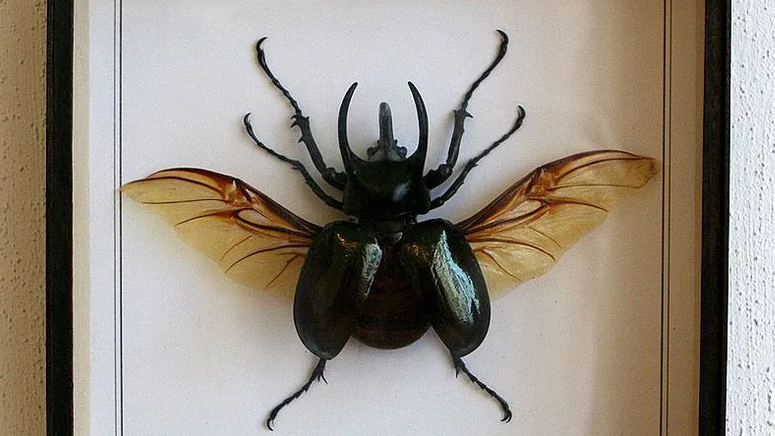This article tells how to make a beautiful collection of dried insects.
Contents
- What is the name of a collection of dried insects, butterflies?
- How to catch insects for the collection: recommendations
- Video: The art of catching insects. Passion for insects.
- How to kill insects for the entomological collection?
- How to dry insects for the collection: General recommendations
- How to dry butterflies for the collection?
- How to dry a dragonfly with open wings at home?
- How to dry the grasshopper, praying at home?
- How to dry a spider for the collection?
- How to dry a bumblebee: tips
- Video: Entomology for beginners. How to soak and straighten beetles, butterflies and other arthropods?
- How to arrange a collection of insects with your own hands: Ideas
- Examples of collections of insects, butterflies, God's cows, spiders, beetles, grasshoppers, mantis, dragonflies: photo
- Is it possible to transport collections of dry insects in the Russian Federation purchased abroad?
- Where can you see real state collections of insects collected by scientists?
- What insect is a pearl collection?
- A collection of insects in glass: why can't you keep at home on Feng Shui?
- The story “Do not catch insects for collections” from Pleshakov’s book “Giant in a clearing”: conclusion
- Video: Collection of insects
Previously, there were many dried insects. Almost every third tried to preserve a beautiful butterfly or some kind of beetle, for example, between the pages of the old book. Naturally, there are real collectors now, despite the projects Greenpeace and other nature defenders. But still, real guardians of rare specimens remained.
If you decide to start creating collections of dried insects, then read the information below. Here you will find answers to questions about how to do this in stages, as well as how to arrange much more. Read further.
What is the name of a collection of dried insects, butterflies?
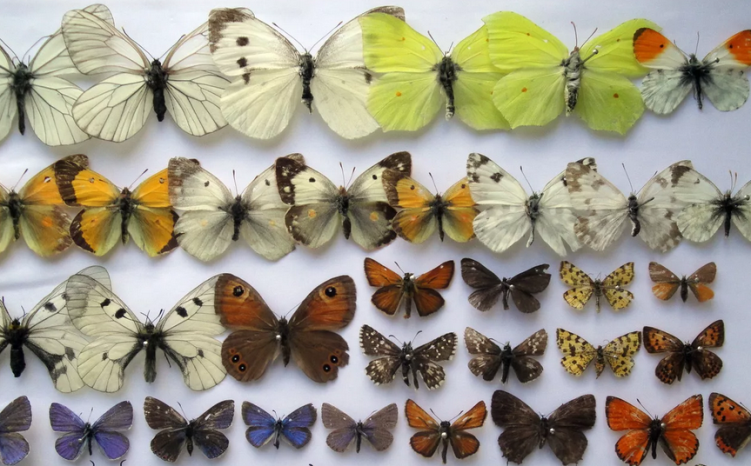
The collection of dried insects is called an entomological collection. It should be noted that specimens are inflated on a special pin and selected according to certain distinctive features. They are stored in special boxes. Collecting butterflies is called lepidopterophilia.
In no case do not call the entomological collection a herbarium, since this concept is applicable only to plants.
How to catch insects for the collection: recommendations

The collection of an entomological collection is possible only with the aim of expanding the knowledge of young naturalists. As for the race for insects for fun, this is strictly prohibited. In general, butterflies, beetles and other common insects that can be found during walks gather children. How to catch insects for the collection?
Here important nuances and recommendations For a young or adult collector:
- You should not dress in the latest fashion - the clothes should be simple and comfortable.
- Particular attention should be paid to shoes. Ideally, she should protect her legs from the cold, and damp. District resistance is also important.
- The headdress should not be distracted from fishing, subside during quick running. Holding it with the help of hands is inconvenient.
It is important to know time:
- It is better to catch insects in May and June.
- However, there are some species that come across closer to the end of summer.
- It is best to choose afternoon hours, since most of the insects fly at the hottest time, after lunch.
Suppose the moths are hiding when the sun sits down. If the insects are night, of course, they are caught after sunset. It is very easy to catch insects in front of a thunderstorm. The air is stuffy, and the stuffiness makes them leave their shelters.
The better to catch butterflies and other beetles, mosquitoes, moths and so on:
- As a rule, naturalists use special nets.
- As support is a stick.
- Such a net is a strong wire circle with a diameter of about 30 cm. A bag of light fabric is attached to it.
How to catch an insect:
- Carefully approach.
- The shadow should be behind the insect, and not in front - otherwise it will slip away.
- The grid should be thrown quickly and accurately, surrounding the insect and preventing it from exiting.
- In addition to the grid, there must be scissors made of strong iron wire.
Where they are found Butterflies, beetles, moths, mosquitoes and other “bugs” with wings:
- Often these are fields, the edge of the forest with flowers, meadows, etc.
- Night butterflies can be caught with the approach of twilight. Then the flocks of small midges.
- You can attract butterflies by pouring the branches of wood with a mixture of honey, water and white beer or sugar water.
They should gather on one of the branches and so easier to catch them. Watch the video how Canadian scientists catch insects using convenient and interesting methods:
Video: The art of catching insects. Passion for insects.
How to kill insects for the entomological collection?
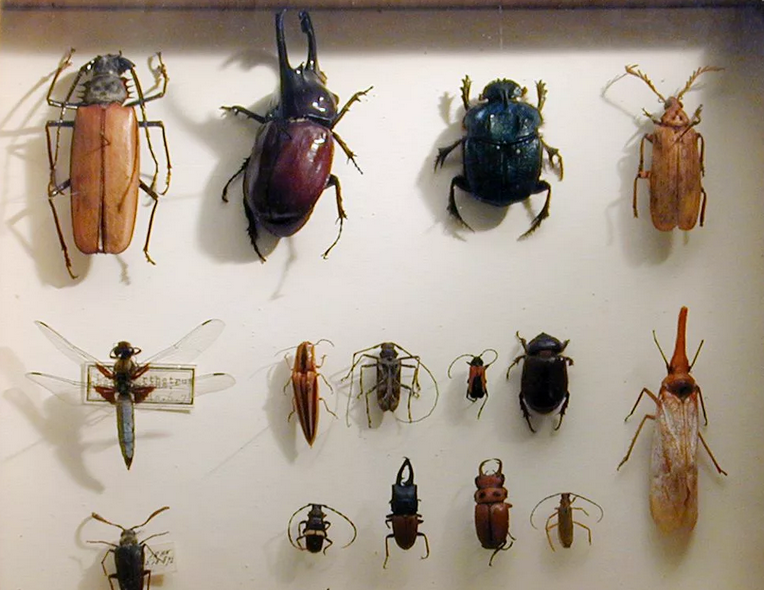
This should be done quickly and humanely. Do not give a living creature to suffer for a long time. This develops cruelty in children. Small butterflies are simply squeezed. Larger insects can be carried out with hot water. Or put a sulfur air on the bottom of the box.
About punctures:
- A punch is carried out in the middle of the chest.
- You need to carefully walk through the whole body with a pin.
- An insect should be flat on a wet plank. It must dry.
- Each plank should be equipped with a piece of paper, which is glued with hummiarabic. It is easier to determine what kind or type the insects belong to.
- They should be stored in boxes at the bottom of which a cork or peat.
- It is best to prick butterflies from top to bottom.
- Before the box is closed, a bubble with gasoline is lowered into it. He protects against moths and bugs.
- If the butterfly wrinkled from time to time, it must be placed under a glass cap, and then straightened.
It is worth knowing: If mold appeared on the bug, then grease this place with a brush with alcohol or ether.
Here are more about how to kill insects for the entomological collection:
- Collectors should remember that the killing of insects is in this case, a forced need, and not a way to have pleasure.
- As a rule, specially made stains are used. This is the most painless way to deprive the insect of life.
- They can be with sulfur or vinegar ether, or chloroform.
You can make stains using high glasses of thick glass or jars. It is excellent if it is possible to clog the stain with a cortical traffic jam.
Advice: At the bottom of such a glass or jars, put the bandwidth. This is especially necessary if you want to dry several bugs at the same time. This method helps so that insects do not rub and go into a lump. In a stain for butterflies, paper is not needed.
It is also worth remembering:
- There should be several stains. You should not put large beetles in one container with flies, etc.
- In order to kill insects, you need to wet the cotton wool with the above means. Pars of different ethers and alcohols are able to kill living organisms.
- The vinegar air kills more slowly. However, insects that were killed in this way are softer.
- If there is no ether, or chloroform, you can use gasoline.
Precautionary measures: Ether and gasoline are fiery substances. Therefore, when using them for processing insects, be more careful.
HEATfor killing insects. This method is suitable if you do not have poisons or you do not want to use them. To do this, do the following:
- Take a jar of tin or zinc.
- Close tightly with a lid.
- Dip boiling water.
Do not do so with insects who have developed jaws. They can ruin the rest of the copies.
Model can be carried out in wine alcohol:
- Put insects into a container with this substance and everything is ready.
- But it is important to remember what is suitable for those who do not have long bright hairs or scales.
- That is, you can only kill dark beetles. The strength of alcohol should be not lower than 60 °.
As you can see, for every type of beetles, butterflies, moths, mosquitoes and other bees, its own way of killing is suitable.
How to dry insects for the collection: General recommendations
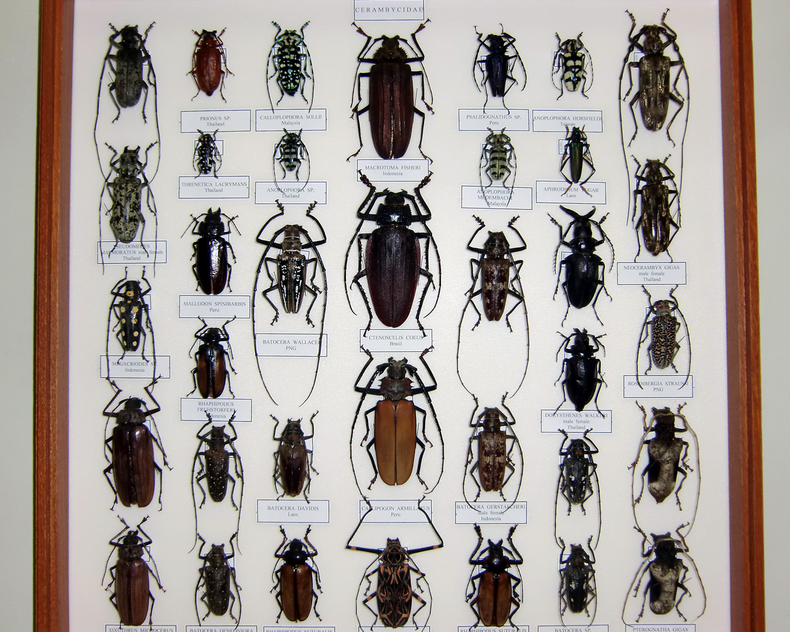
Dry the insect immediately after it is caught. If you need to dry the beetle, it is glued to the foam with glue. Be sure to straighten his paws and fix them with pins.
- After the insect dries, you need to carefully remove it from the foam, and then glue it on a cardboard dick.
- It is important to protect the collection from pests.
Bulas are attached to the foam of insects if they are dry. There should be a piece of paper with the name nearby. Foam is placed in a box, cleaned in a warm and dry place. As a rule, drying lasts about a week. But everything can be prepared before. Beetles will dry up to a month. The period depends on the dimensions of the insect and the region where it was caught.
How to dry butterflies for the collection?
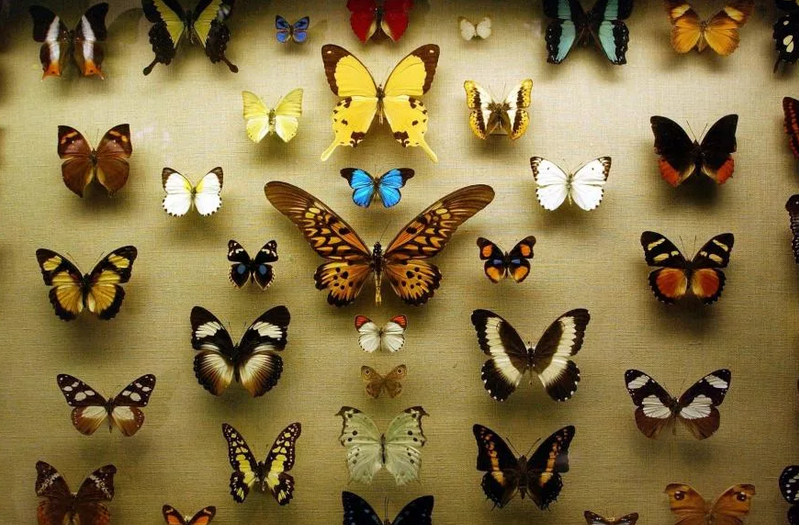
So, how to dry butterflies for the collection? Here are a few important nuances:
- The main thing is to spread the wings. You need to do this correctly.
- If insects have just been caught, you can immediately start the process.
- And if the butterflies are dried, then they need to be soaked.
- This can be done in a glass exicator or in a pan. Sand is falling asleep there (it is desirable that it be small, river, sifted through a sieve, sustained in boiling water).
- Drain the water, and use sand for arranging bags with butterflies.
- Instead, you can use cotton wool or moist foam. The butterfly is soaked in vapor in water.
- Cover the pan tightly with a lid.
Advice: Add phenol to the water. It will save from rot and mold, but this substance is considered very toxic.
Small butterflies can be straightened the very next day. Large requires a little more time. You can add water to the syringe and insert it into the chest of the insect, where the wings begin. This will accelerate the process. It is also worth knowing the following:
- If the butterflies are rare and delicate, they can be planted on a pin immediately.
- If the insect head is turned to the side, it should be corrected with tweezers so that it takes a normal position.
- Buying insects occurs on straightening.
- It is necessary to place the insect so that its body is in the groove, and the wings are located on the planks. The basis in the straightening is a wooden plate.
- On some products, the distance between the boards is regulated using a screw.
The process of laying the butterfly for straightening:
- Shine a pin with a butterfly into a groove, perpendicular to longitudinal and transverse axes.
- The base of the wings should be located at the upper edges.
- Stick up to the right of the abdomen - otherwise the butterfly may begin to turn.
- Put pieces of cellophane or tracing paper on the wings, which are held on the planks. They must cover the wings almost completely.
- Use a long, tailor. Carefully move the wing until the upper edge is perpendicular to the longitudinal axis.
- Then move the rear wing. It should go under the front.
- Another pair of wings moves similarly. By the way, do not pierce the wings. This will spoil their appearance.
Advice: Print along the edges. The wings should be pressed to the planks, not subject to displacement. Put cotton wool under the abdomen so that it does not fall, and lay the mustache along the front edge.
Butterflies dry for several days. And then their body retains its properties. By the way, the just caught insects dry longer than those who have soaked.
When the butterfly is already removed from straightening:
- It needs to be provided with a label.
- Indicate on it the name of the region where the butterfly, date, surname is caught.
This design of the collection allows you to save the insect in a beautiful form for a long time, and the label will not allow you to forget all the necessary information.
How to dry a dragonfly with open wings at home?
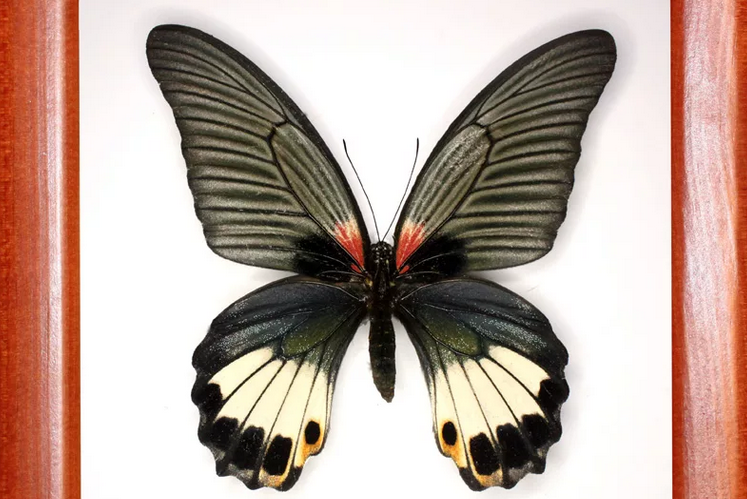
The dragonfly is as fragile as the butterfly. Her wings can be broken by one incorrect movement of the hand. If you decide to dry it, then you need to do it right. Many people just put a dragonfly on a piece of cotton wool. This method is not successful, since insects dried with this method are not stored for a long time. How to dry a dragonfly with open wings at home? Here are a few nuances:
- Dragonfly should be pricked to pins. This is the most optimal way of storage.
- Sometimes before dried a dragonfly, it needs to be steamed. This is required when it lay in its original form for a long time.
- First, place it in a wet camera. It can be either a crystallizer, or a glass bath or just a deep plate.
- On the bottom of this container, washed sand is placed. An insect is laid on top.
- It is necessary that the vessel is well closed.
It is worth knowing: It is forbidden to prick insects in a dry state - they can break. The dragonfly first needs to spread the wings.
This can be done according to the same method as straightening the butterfly wings. Read above in the text.
- Lay the dragonfly on a special groove, holding your fingers.
- With your right hand, stick a pin into it.
- Then take the insect with two fingers, and advance it to the maximum depth.
The pin is injected perpendicular to the upper surface of the insect, towards the surface of the spread wings. It is necessary that a place for the fingertips is enough between the pin of the pin and the insect. To do this, follow the following:
- Take the pin by the head, while not hitting the insect.
- Be sure to straighten the already launched dragonfly.
- Bend your legs closer to the body. They should not stick out. However, they must maintain a natural position.
- Grind your legs with pins, until the insect dries.
- The straightened wings should be laid horizontally.
Remember: During straightening, the dragonfly is taken with tweezers, not with their hands. The needle carefully sticks into the vein so as not to damage the wings, and not to break them.
In order for a bright pattern on the sides of the breast segments and the abdomen at the dragonfly does not disappear, you need to treat it with acetone. When the dragonfly falls asleep in the stain, you need to take it out, holding it by the wings that are folded together, and then lower it into acetone. But not with the head. Hold it in a similar state for a couple of hours, and then hold on the air for an hour.
After that, the dragonfly is dried and laid on the mattress. The preservation of the correct color is important for identifying a biological appearance. Coloring is an important indicator of one or another insect.
How to dry the grasshopper, praying at home?
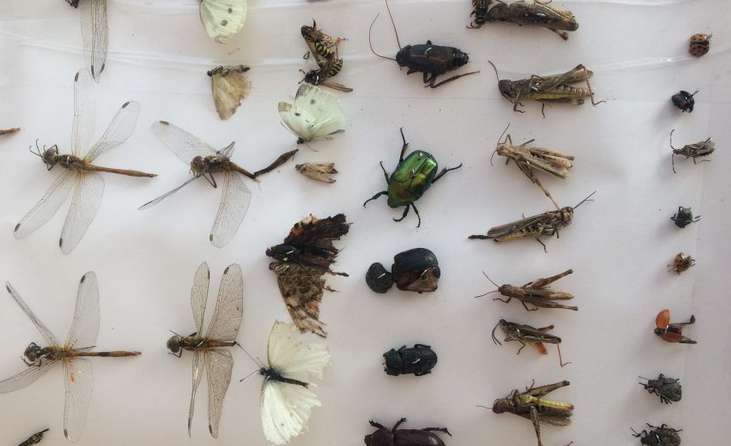
The main minus in the drying of the grasshopper and mantis is that he will turn from a green “handsome” into a brown wrinkled bug. It is very difficult to get around this process. How to dry the grasshopper, praying at home? Important nuances:
- As mentioned above, it is important that insects during drying do not blacken and retain color.
- Therefore, before the start of the process, it is better to gut them - otherwise they will dry for a long time, and maintain an unpleasant odor.
You need to do all this in the following sequence:
- After the grasshoppers and praying people were caught, they are killed in a stain. It is necessary that the bank has a wide neck, strips of paper lay at the bottom.
- For “wrinkling” you need ether. Evaporate it in the bank, then lay the insect and close the container for several hours.
- After that, insects immediately straighten and prick. This is done on the first day, until they have dried up. Otherwise, there is a risk of breaking the limbs, and for grasshoppers and praying people, this is the most important thing.
- Pin pins stick to the grasshoppers in the right overlap.
- After that, wait until the insect dries.
- The paws should be closer to the body so as not to break them.
Then make the collection with labels and install it on a permanent storage.
How to dry a spider for the collection?

It is best to catch and dry spiders for the collection in August or September. At this time, sexually mature individuals are the most. For fixation, you can use alcohol 96% or formalin 10%. The smaller the spider, the more difficult the drought occurs. Spiders should not be thoughtlessly thoughtlessly. In such cases, their limbs are bent and freeze.
It is better to put a victim:
- Place the spider in the jar.
- Instead of a cover, you should use a cotton wool that is moistened in formalin.
- After a time, the paws must be straightened with a pin on the plank, that is, straightened.
- Entomological pins should be standard length, have round heads. Ordinary ones cannot be used. They quickly rust. This must be done when the spider is already dead. The paws are straightened and fixed. This requires pins and strips of paper.
- It is important not to break the spider. But at the same time, there should be no reductions in the paws, reliable fixation is also important.
- You need to store spiders in a dark, dry room.
Here is another way to dry the spider. It is also suitable for different beetles. The following will need:
- A jar that will be used for a stain.
- Paper - more dense will be used for mattresses and labels, and the softer must be filled with a stain, make “mattresses”.
- As poison, use ethylacetate or varnish removal.
- You will also need cotton, thread, needles and cardboard boxes.
- Capacities - plastic and metal.
- Glue and binocular are also needed.
Perform the following:
- Foll the jar with paper, which must first be cut in stripes. You can crumble it. This is necessary so that the specimens are clean and dry.
- After drip there a few drops of fluid that remove the varnish. This is an analogue of ethyl acetate. It poops insects, but does not make the cover fragile.
- Now cut the basics for mattresses-you can put the box on the sheet, for example, from under sugar.
- Bend the edges, cut the rectangles in the corners. All blades are bent twice - at the edge and after half a centimeter.
- Insects or spiders are laid out on a mattress and mounted on pins.
For each mattress, cut a rectangle that put on the bottom (thick paper) and a rectangle of soft and thin paper (to cover). On top of dense fabric there must be a wool. Now lay out the blown insects. But you can immediately stick them. When the insects dry, they can be soaked. To do this, the mattress is placed in a closed pan with wet wool at the bottom.
When an insect or spider is dried, you need to write explanations on the coating of loose paper. As a rule, this is the region and surname of the young researcher. If the type of insect is unknown, you should take a determinant and find according to identification signs.
How to dry a bumblebee: tips
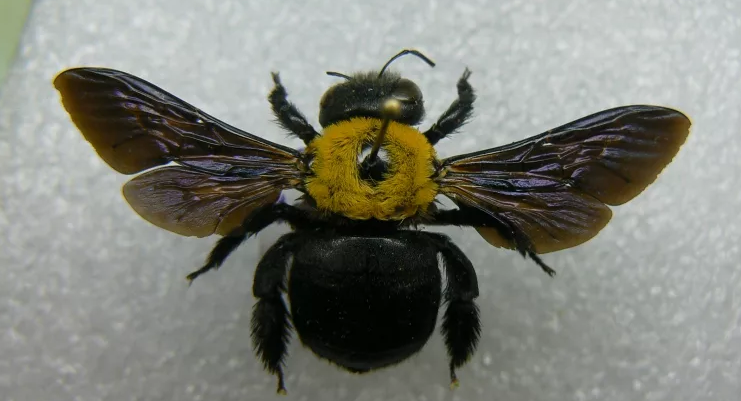
Bromeles and hornets must be poured first in the resin or acrylic for the collection. Just because the stinging insect is quite dangerous to poke a pin while it is still alive. Here are the tips on how to dry the bumblebee:
- To begin with, the individual should be caught in a container. It can be a jar or a box.
- Put in a jar with an epoxy resin with hardener or acrylic. This will require a disposable container.
- Mix the “fill” thoroughly.
- The process itself has three stages. First, you need to fill the first layer, put an insect (beetle, bumblebee, Osa) there and pour. Before that, you should give the beetle the desired pose. The last stage is to pour everything in finally.
- After the insects are drowned, they need to be taken out and straightened on the foam with pins and let it dry.
Important: The main thing is not to fight about the sting and make sure that the insect no longer guesses signs of life. Quite often bumblebees, bees and wasps can only pretend that they are unconscious, and after a person takes them in his hand, sting.
By the way, you can give the desired pose a bumblebee with tweezers or other sharp object, even a nail. The main thing is to be neat. The beetle should lie tight. It is not necessary to fill it with a portion of tar or acrylic immediately, otherwise it can shift. Watch the video how to soak and straighten insects. The collector clearly shows this.
Video: Entomology for beginners. How to soak and straighten beetles, butterflies and other arthropods?
How to arrange a collection of insects with your own hands: Ideas
Insects in the world are more than a million species. Each of them is truly unique. The collection of insects is even collected by an amateur, also has its value. That is why many people are interested in creating collections. It is important to draw it up correctly so that you can show or simply store it. Below you will find ideas that will help you design a collection of insects with your own hands.
The easiest option is to place insects on a paper mattress or foam, put in a frame and cover with glass.
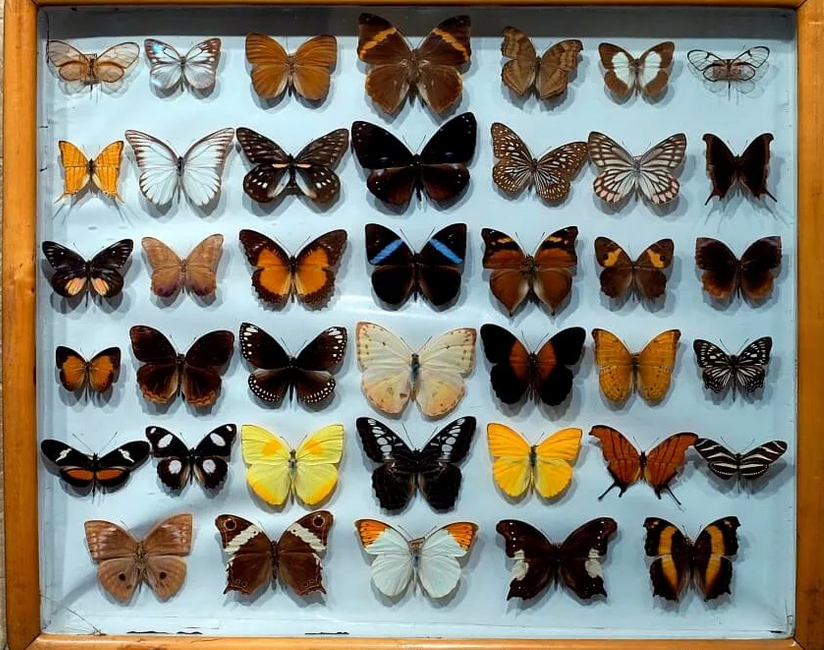
Here are the original design of butterflies.
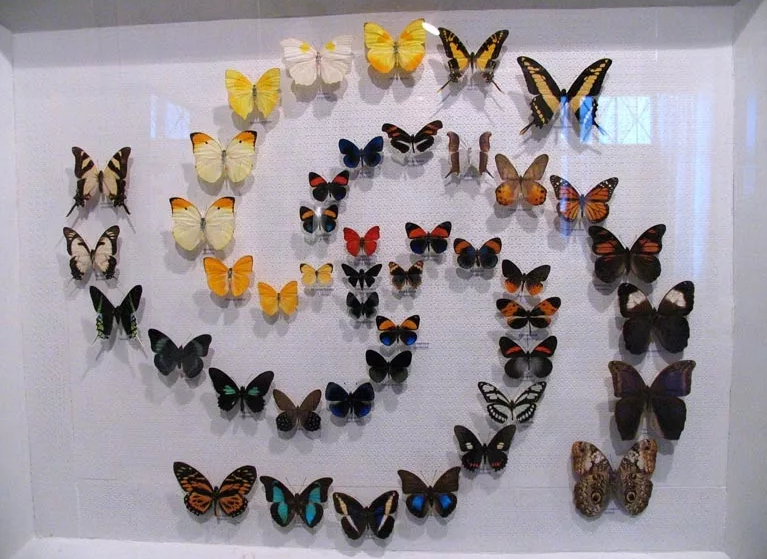
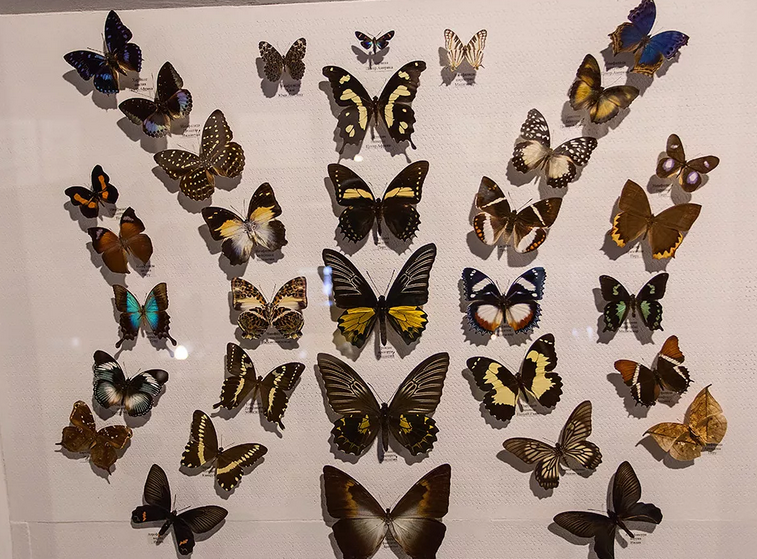
Using cans and glasses, you can create compositions. Also use dry branches, moss and other natural materials.
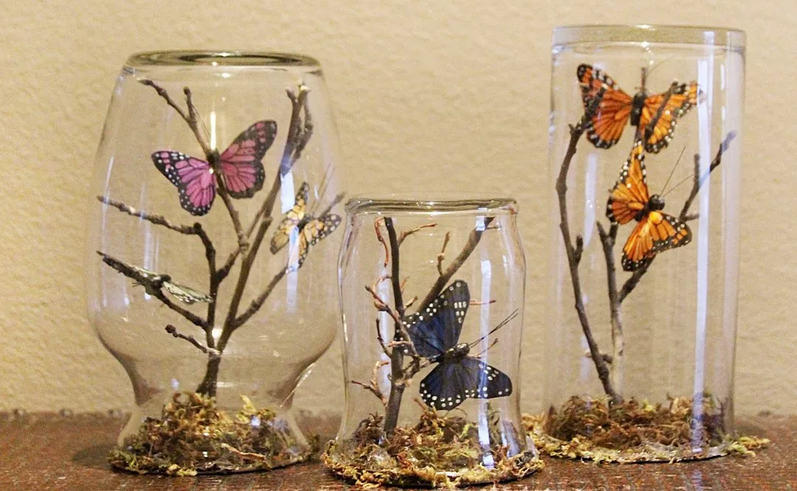
In the middle you can place the most beautiful and rare beetles that will be the center of attention.
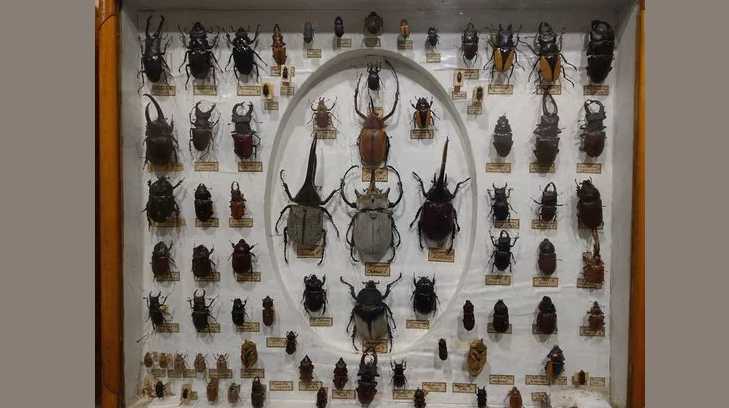
Large dried insects in separate glass containers look beautiful.
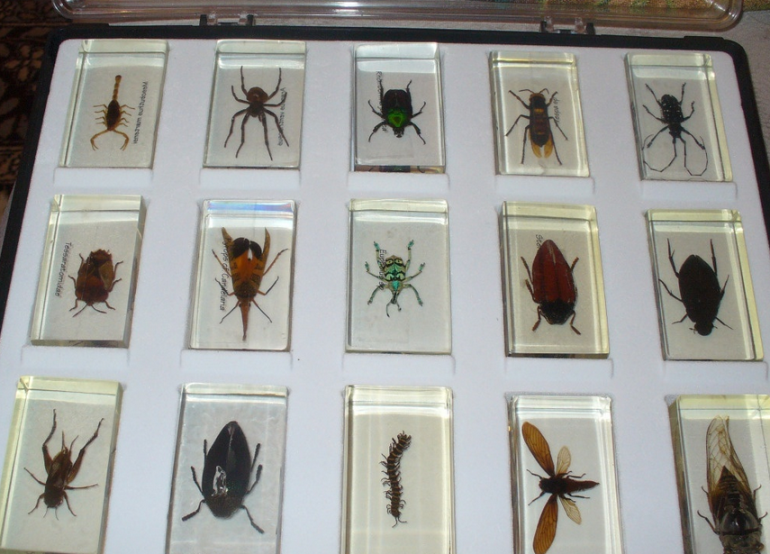
In one large box you can make sections, in each of which to place insects from a separate region.
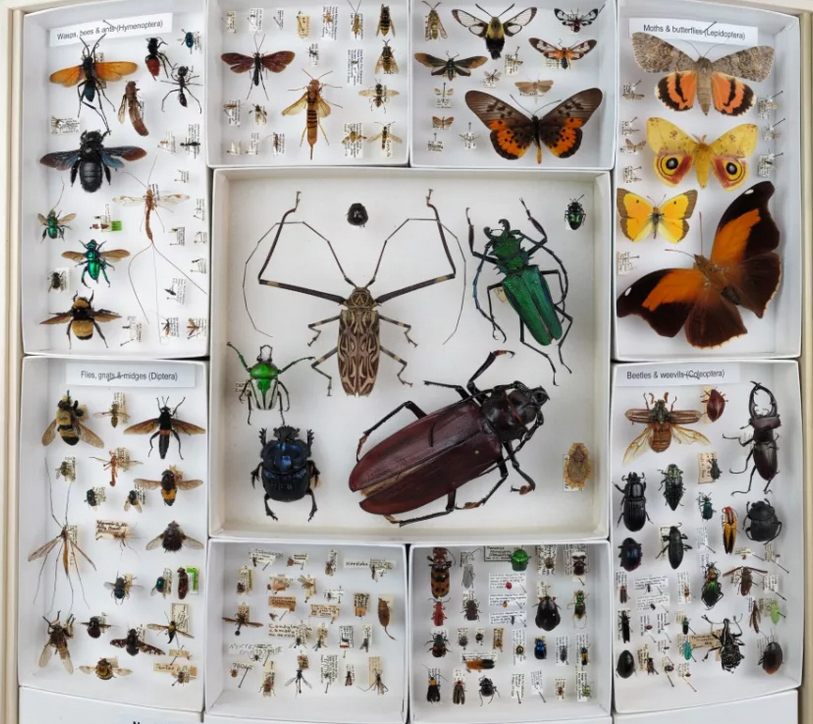
Examples of collections of insects, butterflies, God's cows, spiders, beetles, grasshoppers, mantis, dragonflies: photo
If you decide to create your own collection of insects, then you need to figure out how you will place them for storage. It can be a box with a frame under glass or a separate container. Here are examples of insect collections - photo:
Different bugs, bugs and moths are collected in this “picture”: simple, but stylish.

An example of a collection of butterflies is gentle and beautiful.

The collection of beetles is bright and interesting.
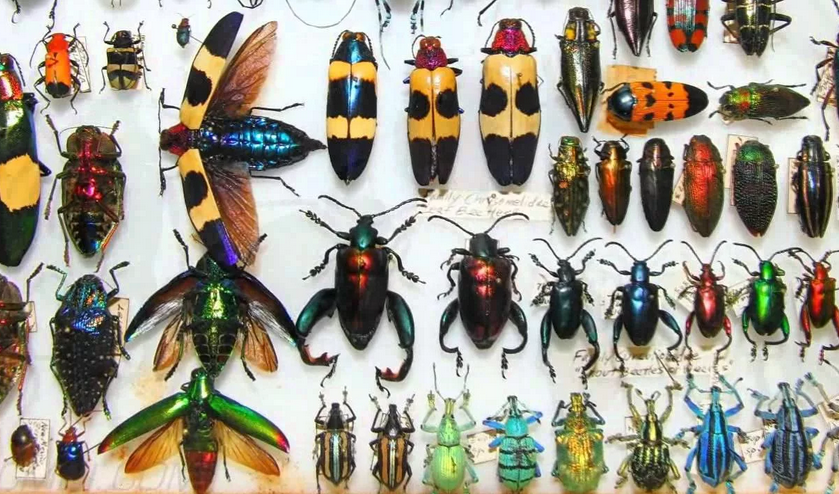
God's cows are almost not collected, since all species are almost similar in appearance. But still, such specimens can be included in your collection of insects.
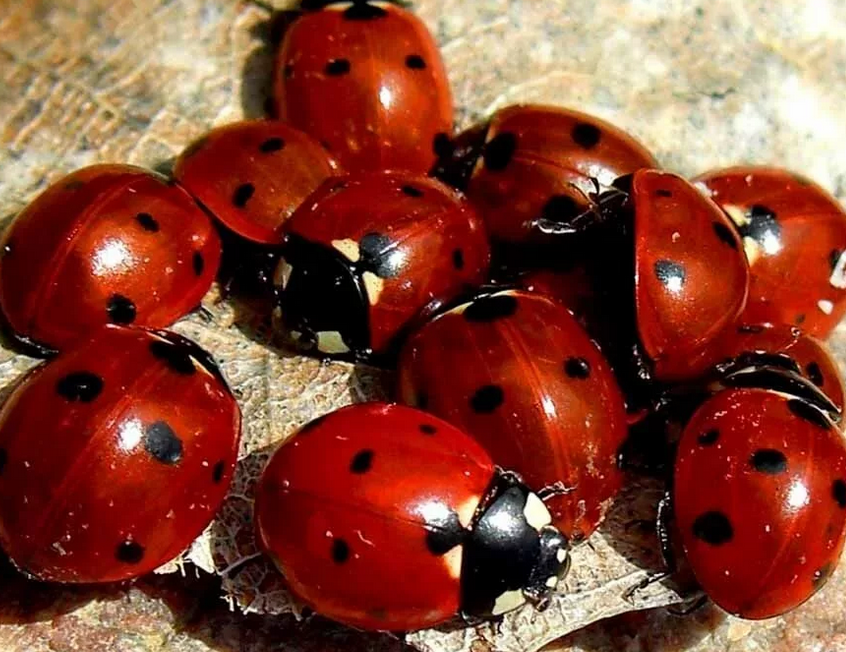
The collection of spiders always looks powerful and attracts attention.
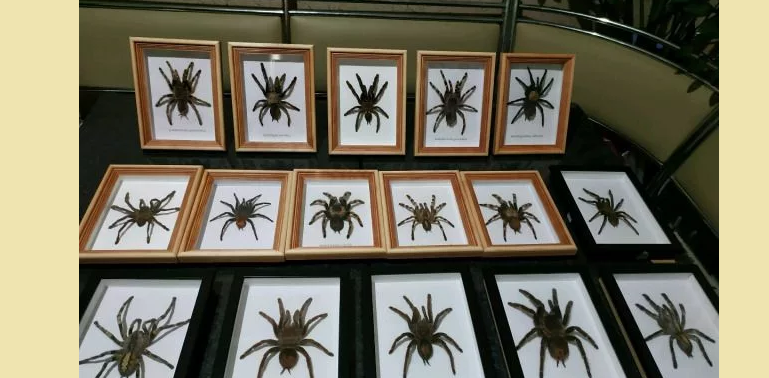
The collection of rare beetles looks unique.
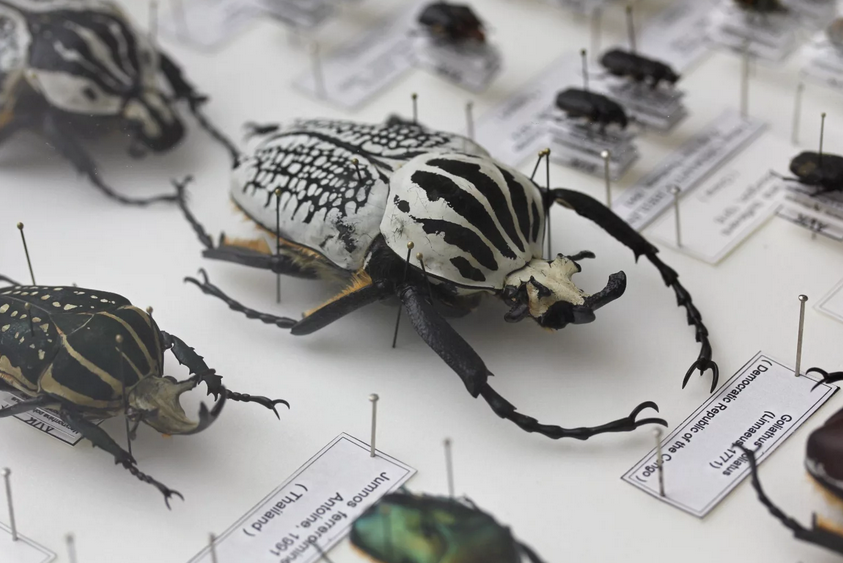
The college of grasshoppers should be correctly completed. If the copies are dried according to all the rules, then they look like real ones.
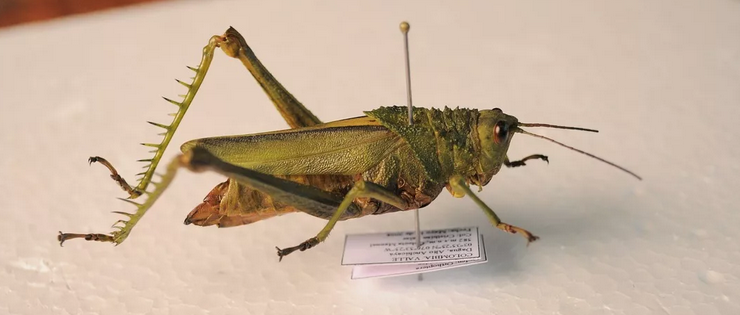
The collection of mantis is original and interesting.
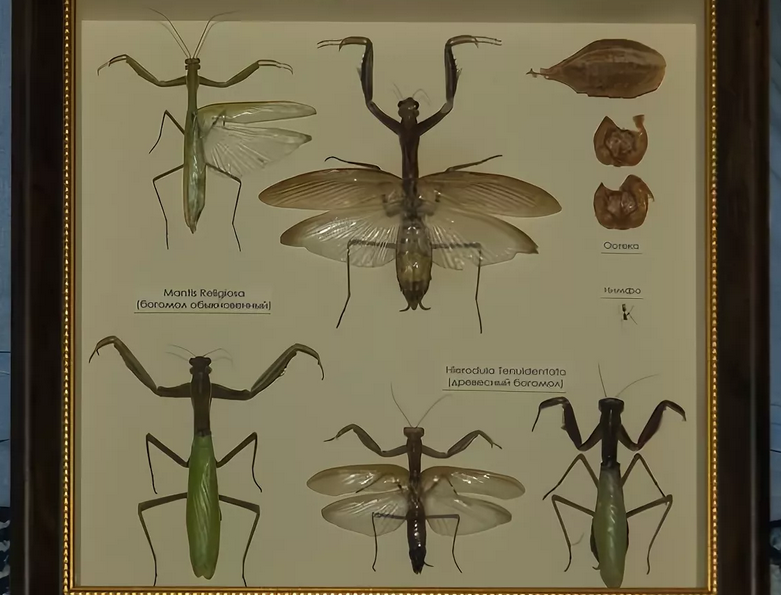
The collection of dragonflies can be designed naturally. Add a twig of dry acacia leaves. It will turn out naturally and original.
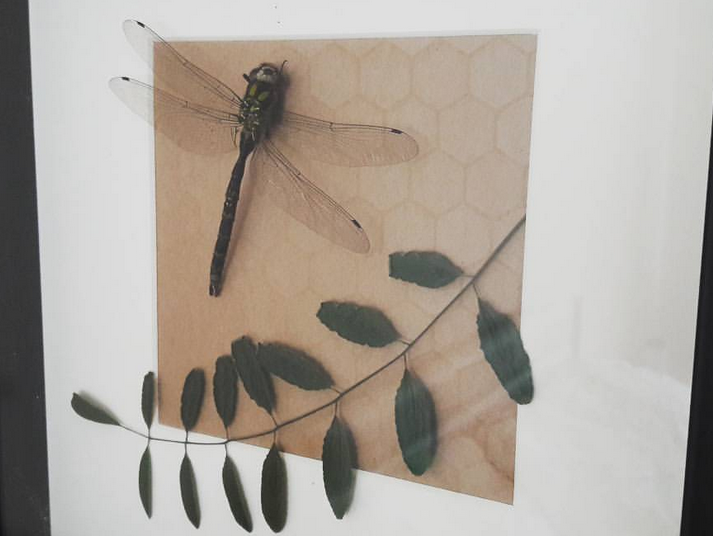
Is it possible to transport collections of dry insects in the Russian Federation purchased abroad?
There are many disputes about whether it is possible to transport insects purchased abroad to their homeland. On the one hand, at customs they may not see the contents of hand luggage. But it is better not to transport them in alcohol. Since fluids in the aircraft salon volume more than 100 ml It is forbidden to carry.
- Collections of insects are often transported in the luggage compartment. Naturally, in some cases, the legislation indicates a special permit for the transportation of animals.
- But some naturalists manage to ignore the “voice of the law” and transport their collections in any container (for example, inside the guitar or double bass), ignoring the paperwork.
- Naturally, the airport employees can identify this and then you will have to answer by law.
In the question of “Is it possible to transport collections of dry insects in the Russian Federation purchased abroad” everything depends on many factors:
- The number of insects in the collection.
- Their uniqueness and values \u200b\u200bfor the state from which they are exported.
- The availability of permission and accompanying documents.
- Requirements of a separate airline and other conditions.
Therefore, before transporting the collection, it is worth consulting in the airport’s help service or call the operator by phone number to the airline. They will answer all the necessary questions and explain the conditions for the transportation of this or that baggage or the contents of hand luggage.
Where can you see real state collections of insects collected by scientists?
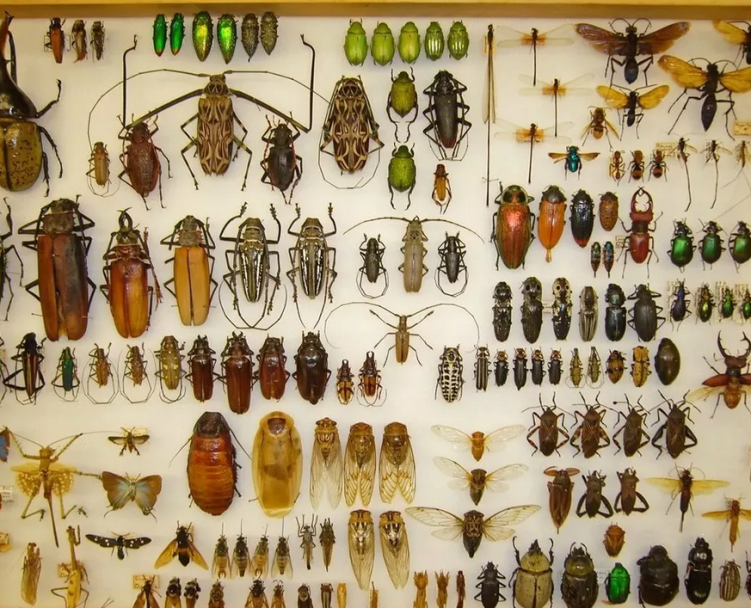
You can see real, state collections of insects collected by scientists in museums. As a rule, these are the work of entomologists - specialists of their field. Sometimes, in order to get a rare imago, they go to distant, exotic countries and spend more than one week on expeditions, overcoming hardships and hardships.
Zoological museums with huge collections of insects are available in Moscow and St. Petersburg. There are also in other cities, but they are not so grandiose. Collections of insects in St. Petersburg already more than 300 yearsand in it about 8000 rare specimens.
What insect is a pearl collection?
The pearl of any collection is a rare insect that either does not live in this climate or is found in limited quantities. Of course, it is very difficult to find such a “jewel”. And to catch - even more so. But, if the collector caught a rare copy, then there is no limit to joy. Such an insect becomes the pride of the collection.
A collection of insects in glass: why can't you keep at home on Feng Shui?
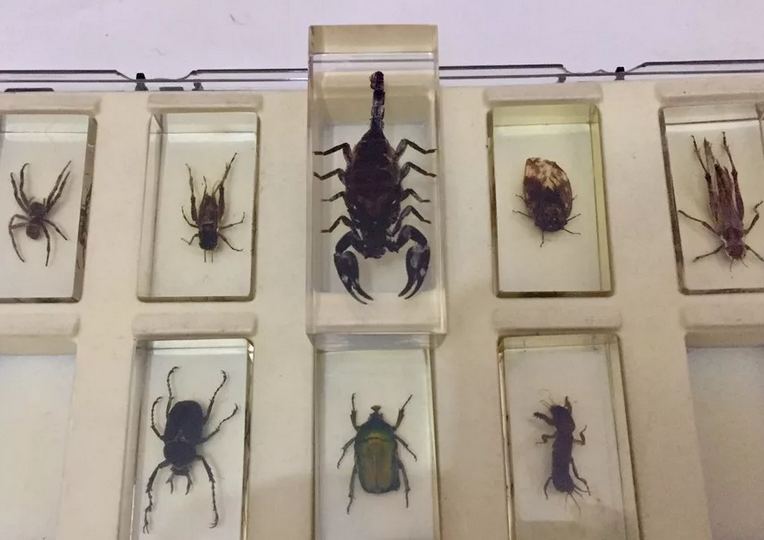
Keeping insects in the collections in the glass of the house on Feng Shui is prohibited. Why? Here's the answer:
- Inanimate organisms can change energy in the house, which will negatively affect the life, health and well -being of the whole family.
- It is the effect on the energy background that is of great importance. Despite the fact that insects can be minimal in size, even from such bugs, moths, butterflies and other bugs, there is a very powerful negative energy. She should not be in the house.
- Dried insects can influence human health, do his dream worse.
- Moreover, frequent conflicts, quarrels from scratch, misunderstanding with loved ones are possible.
Therefore, you should think many times before bringing a collection to the house.
The story “Do not catch insects for collections” from Pleshakov’s book “Giant in a clearing”: conclusion
Many writers are trying to convey to people with the help of their works that to kill even insects is negative and very bad. For example, the story “Do not catch insects for the collections” from Pleshakov’s book “Giant in a clearing” is a vivid example of how the author tries to fight for the life of every bug. Here is the story itself:
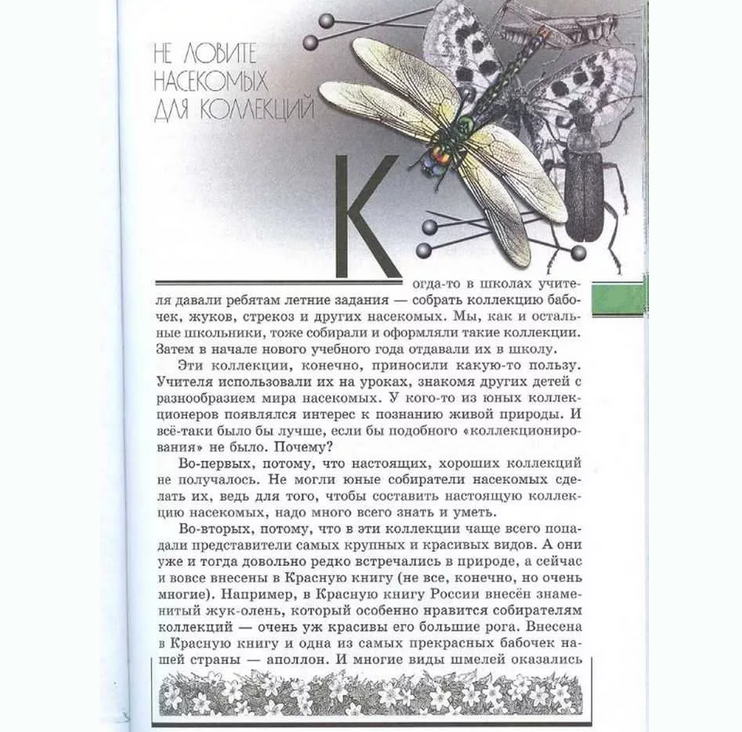
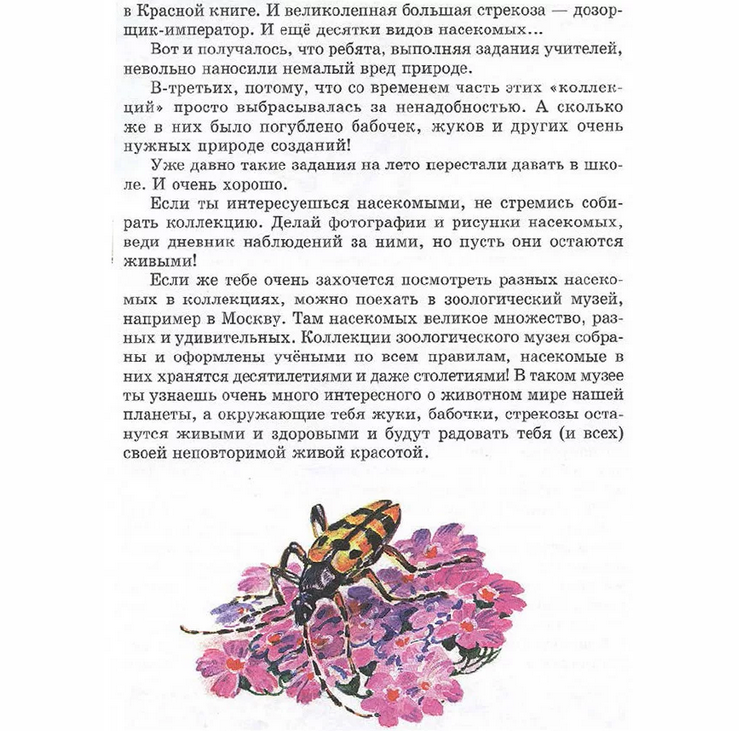
Here is a conclusion that can be drawn after reading this story:
Often, schoolchildren try to make beautiful collections of insects and make a lot of efforts for this. However, it should be remembered that trying to decorate his home or make a report on a lesson, a person does indisputable harm to nature. After all, he deprives her of rare species of insects, many of which are doomed to extinction.
That is why this lesson can be called not only inhumane and cruel, but also wasteful. Indeed, in this case, the “researcher” does not give anything to the world, but only takes from it.
If there is a desire to look at the dried insects in the collections, it is better not to do them yourself. Go to the real zoological museum and read the unique works of professional scientists. There you can find many rare species and really much more to learn about the world around them than to dry beetles, butterflies and other bugs yourself.
Video: Collection of insects
Read on the topic:

